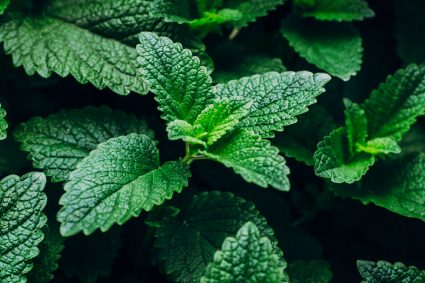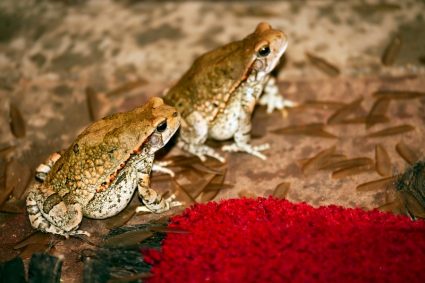
Grasshoppers, although seemingly harmless, can wreak havoc on your garden. These voracious eaters are capable of destroying vast amounts of plant material in a short time, leaving gardeners frustrated and helpless. But don’t despair; there are effective strategies to keep grasshoppers at bay. This comprehensive guide will provide you with all the information you need on how to keep grasshoppers out of your garden.
To keep grasshoppers out of your garden, encourage natural predators like birds and spiders, use physical barriers like row covers or netting, and apply natural repellents such as garlic spray. Additionally, practice companion planting with species that repel grasshoppers, maintain a healthy and well-irrigated lawn, and use organic control products like neem oil or diatomaceous earth. In case of severe infestations, consider eco-friendly pesticides.
Identifying a Grasshopper Infestation
Before implementing any control measures, it’s crucial to identify whether you’re dealing with a grasshopper infestation. Here are the signs to look out for:
- Presence of Grasshoppers: Regularly spot grasshoppers in your garden. They range in size from 1 to 7 cm as adults and have enlarged hind-leg femurs for jumping.
- Plant Damage: Grasshoppers chew through plant tissue, creating ragged or round holes in leaves and stems. They may also damage fruits and vegetables.
- Increased Activity in Warm, Dry Weather: Grasshoppers thrive in warm, dry weather, so increased activity during these conditions may indicate an infestation.
Natural Prevention Methods
Once you’ve identified a grasshopper problem, it’s time to implement prevention and control methods. Here are some natural strategies:
Encourage Natural Predators
Attract birds, spiders, toads, and other predators that feed on grasshoppers. Provide a water source, nesting habitat, and diverse selection of native trees and shrubs.
Use Physical Barriers
Protect your plants with row covers, aluminum window screens, or netting. Remember to cap the barriers to prevent grasshoppers from climbing over.
Apply Garlic Spray
Grasshoppers dislike the smell and taste of garlic. Use a garlic-based repellent or make your own garlic spray.
Practice Companion Planting
Intercrop your garden with plants that repel grasshoppers, such as cilantro, basil, marigolds, forsythia, crape myrtle, passion vine, goldenrod, juniper, or Russian sage.
Maintain a Healthy Lawn
Keep your garden healthy and well-maintained through proper irrigation, fertilization, and weed control. Healthy plants are less attractive to grasshoppers.
Use Organic Control Products
Products like neem oil, diatomaceous earth, or kaolin clay can deter and control grasshoppers.
Eco-Friendly Pesticides
If the infestation is severe, you might need to resort to pesticides. However, it’s crucial to use eco-friendly options that won’t harm beneficial insects or the environment. Some effective options include BotaniGard ES, Nolo Bait, and homemade sprays made from garlic, onion, and hot pepper. Remember to follow the product instructions for safe and effective use.
Conclusion
Keeping grasshoppers out of the garden requires a multi-pronged approach that includes prevention, natural repellents, and eco-friendly pesticides. By understanding the grasshopper lifecycle and implementing these strategies, you can protect your garden and enjoy a bountiful harvest. Remember, the best defense is a good offense. Start implementing these strategies at the beginning of the growing season to keep grasshoppers at bay.
Frequently Asked Questions
How can I make a homemade garlic spray to repel grasshoppers?
To make a homemade garlic spray, you will need 2 whole bulbs of garlic and water. Peel and crush the garlic cloves, then mix them with a small amount of water. Blend this mixture until it forms a paste. Add this to 1 gallon of water and let it sit overnight. The next day, strain it into a spray bottle. You can spray this mixture directly onto your plants. Remember to reapply after rainfall.
What is companion planting?
Companion planting is a gardening method where different species of plants are grown together for mutual benefit. In the context of grasshopper control, certain plants are grown alongside your main crops to repel grasshoppers. These companion plants emit scents or contain compounds that grasshoppers find unattractive, thereby protecting your main crops.
How does diatomaceous earth work to control grasshoppers?
Diatomaceous earth is a natural powder made from tiny fossilized aquatic organisms called diatoms. It works by getting into the joints and under the hard exoskeleton of grasshoppers, causing them to dehydrate and die. To apply, simply dust your plants with diatomaceous earth. However, remember to reapply after rain as it can be washed away.
Are grasshoppers harmful to humans or pets?
No, grasshoppers are not harmful to humans or pets. They do not bite, sting, or carry diseases. Their main threat is to plants, as they can cause significant damage by feeding on leaves, stems, and crops.










